The Tiwanaku archaeological site in Bolivia boasts a rich and captivating history dating back to the 1st millennium AD. Exploring this UNESCO World Heritage site on a private tour from La Paz offers a unique opportunity to explore the architectural marvels and cultural significance of the ancient Andean civilization. With an expert guide leading the way, visitors can uncover the secrets behind the Kalasasaya temple, Akapana pyramid, and the iconic Gateway of the Sun. The scenic drive through the breathtaking Andean landscape sets the stage for an immersive experience that promises to leave a lasting impression on those eager to unlock the mysteries of this remarkable historical treasure.
Key Points
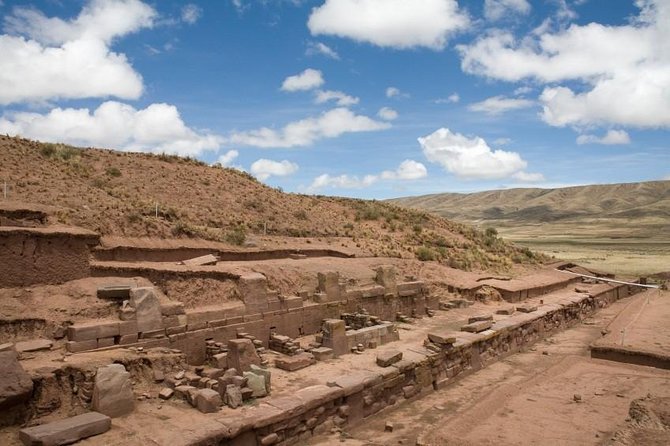
- Explore the UNESCO World Heritage site of Tiwanaku, the ancient Andean civilization, on a private half-day tour from La Paz.
- Discover the architectural wonders of the Kalasasaya temple, Akapana pyramid, and the iconic Gateway of the Sun.
- Enhance your understanding of Tiwanaku culture through guided insights and a visit to the National Museum of Archaeology.
- Enjoy a scenic 1-hour drive through the Andean landscape en route to the site.
- Benefit from round-trip transportation and take advantage of morning or afternoon tour options.
Tour Overview
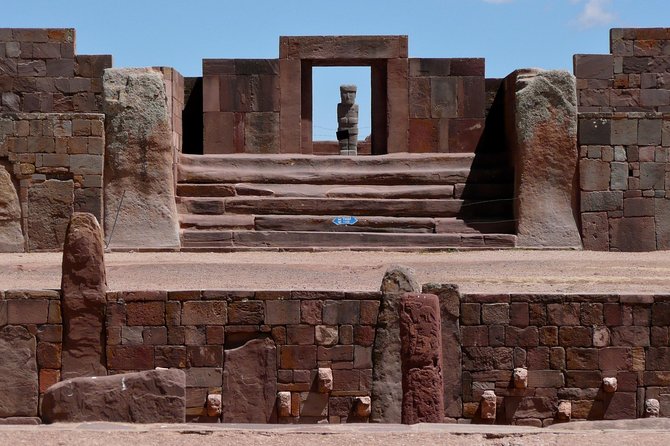
This private half-day tour whisks visitors away from La Paz to explore the ancient UNESCO World Heritage site of Tiwanaku, where they’ll explore the mysteries of a once-thriving Andean civilization.
With an expert guide leading the way, travelers will discover the site’s iconic pyramids and sacred temples, learning about the Tiwanaku people and their millennium-long reign.
The tour includes round-trip transportation from La Paz, with both morning and afternoon options available to fit travelers’ schedules.
Along the scenic 1-hour drive, guests can sit back and enjoy the views before arriving at the archaeological site to enjoy this captivating piece of history.
Want to keep it personal? More private experiences we love in La Paz
Tiwanaku Civilization
The Tiwanaku civilization was a significant Andean culture that thrived from AD 550 to 1000, exerting a profound influence on present-day Peru and Chile.
Its capital, located in the southern Lake Titicaca Basin, covered an area of around 4 square kilometers.
Archaeologists have uncovered remarkable evidence of this ancient society, including decorated ceramics, monumental structures, and impressive megalithic blocks.
The civilization’s impressive architectural achievements, such as the Kalasasaya temple and Akapana pyramid, continue to captivate visitors today.
Despite its millennium-long success, the reasons behind the Tiwanaku civilization’s eventual disappearance remain shrouded in mystery, leaving visitors to ponder the rise and fall of this enigmatic pre-Columbian culture.
Highlights of the Tour
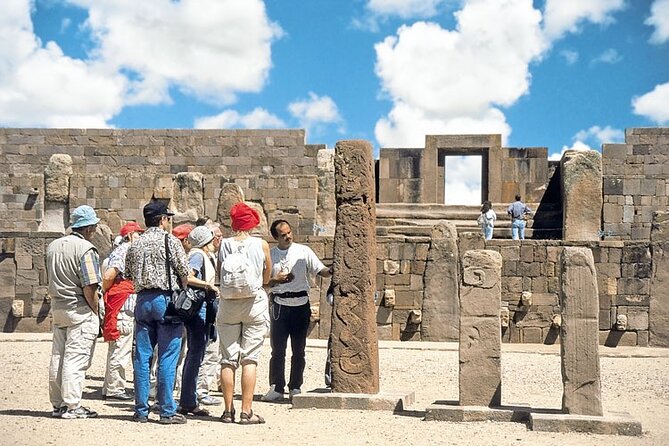
Visitors to the Tiwanaku archaeological site can expect to explore a wealth of captivating structures, from the imposing Kalasasaya temple to the enigmatic Akapana pyramid.
Guides lead guests through these monumental remnants, shedding light on the significance and symbolism behind the site’s architectural marvels. One of the tour’s highlights is the Gateway of the Sun, adorned with intricate carved symbols that have puzzled historians for centuries.
The onsite Museo Nacional de Arqueologia (MUNARQ) provides further insight into the Tiwanaku civilization, with a knowledgeable guide explaining the exhibits.
Throughout the experience, visitors gain a deeper understanding of this ancient Andean culture and its enduring legacy.
Monumental Structures
At the heart of the Tiwanaku archaeological site stand several monumental structures that offer a glimpse into the architectural prowess of this ancient Andean civilization. Towering over the landscape, the Kalasasaya temple and Akapana pyramid exemplify the scale and complexity of the Tiwanaku’s construction achievements.
Visitors can:
-
Marvel at the expertly carved and precisely fitted stonework of the Kalasasaya temple, an imposing rectangular enclosure framing the sacred Gateway of the Sun.
-
Climb the terraced steps of the Akapana pyramid, an engineering feat rising over 17 meters high with a complex drainage system.
-
Admire the colossal statues and carved monoliths scattered throughout the site, evidence of the Tiwanaku’s mastery of stonework.
-
Ponder the astronomical alignments and symbolic carvings that suggest the site held deep spiritual significance.
-
Explore other remnants of administrative and residential buildings that hint at the scale and complexity of the ancient Tiwanaku civilization.
Gateway of the Sun
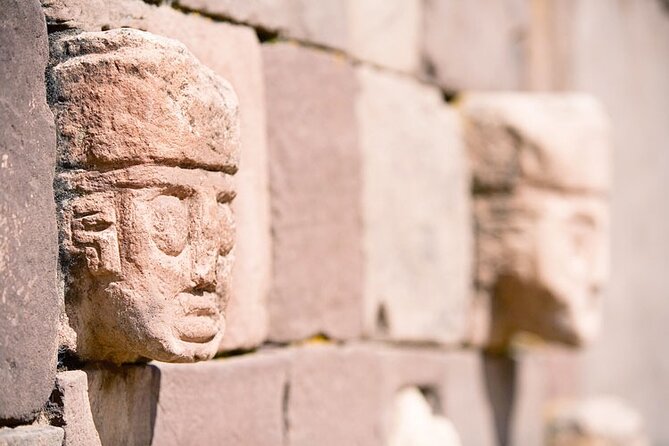
One of the most iconic features at the Tiwanaku archaeological site is the Gateway of the Sun, a monumental carved stone archway that stands as a testament to the civilization’s advanced architectural and symbolic capabilities.
Adorned with intricate carvings and depictions, the gateway is believed to have served as an important ceremonial entrance, aligning with the solstices and equinoxes.
Visitors can observe the detailed symbols and patterns etched into the stone, which likely held deep religious or cosmological significance for the Tiwanaku people.
Examining this impressive structure offers a glimpse into the sophisticated artistry and engineering prowess of this ancient Andean culture, which continues to captivate and inspire scholars and travelers alike.
Museo Nacional De Arqueologia
The Museo Nacional de Arqueologia (MUNARQ) allows visitors to further explore the Tiwanaku civilization’s remarkable artistic and cultural achievements, with the tour including admission to this renowned museum.
As part of the tour, a knowledgeable guide explains the museum’s fascinating exhibits, which showcase:
-
Intricately decorated ceramics that reveal the Tiwanaku people’s advanced artistic skills
-
Imposing megalithic stone blocks and architectural remains from the capital city
-
Skillfully carved stone sculptures depicting important religious and cultural figures
-
Textiles and jewelry that highlight the civilization’s sophisticated weaving and metalworking techniques
-
Artifacts that provide insights into the Tiwanaku’s advanced agricultural practices and trade networks
Through these exhibits, the museum offers a deeper understanding of the Tiwanaku’s remarkable legacy and their enduring influence in the Andes.
Scenic Drive From La Paz
Departing from La Paz, the comfortable, air-conditioned minivan winds its way through the stunning Andean landscape, offering a scenic 1-hour drive to the Tiwanaku archaeological site.
Along the journey, travelers are treated to breathtaking views of the rugged mountain peaks, colorful traditional villages, and the vast, high-altitude plateau of the Altiplano.
The drive provides a perfect opportunity to soak in the unique natural beauty of the region and mentally prepare for the ancient wonders that await at the Tiwanaku ruins.
With hotel pickup and drop-off included, the transfer to this UNESCO World Heritage site is both convenient and enjoyable, setting the stage for an immersive exploration of this mysterious Andean civilization.
Reviews and Feedback
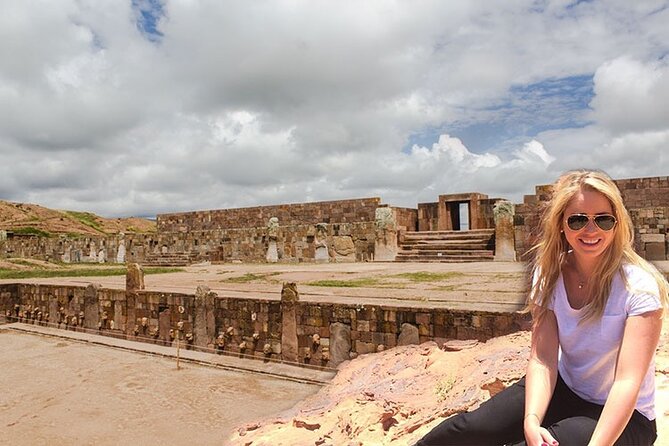
Travelers have provided a mix of positive and constructive reviews for the private tour of the Tiwanaku archaeological site, with an overall rating of 4.5 stars out of 12 reviews. Guests have praised the tour’s knowledgeable guides and the unique experience of exploring the ancient Tiwanaku civilization’s structures and symbols.
However, some have noted concerns about guide attentiveness and time management during the tour.
There are recommendations for improved coordination and pacing to maximize the experience.
Plus, suggestions have been made for providing more in-depth information and context about the site’s history and significance.
Feedback has also highlighted the need for better water and sun protection provisions during the tour.
Lastly, opinions have been expressed about the overall value and pricing of the experience compared to similar tours.
Frequently Asked Questions
Can I Bring My Own Snacks on the Tour?
Yes, you can bring your own snacks on the tour. The tour overview indicates travelers should bring bottled water, so bringing personal snacks would also be appropriate and convenient. However, the tour already includes admission fees, so purchasing snacks on-site is optional.
Is the Tour Available in Other Languages Besides English?
The tour is available in other languages besides English. According to the information provided, the tour includes an expert guide who can explain the site’s history and features in multiple languages to accommodate the diverse needs of travelers.
What Is the Cancellation Policy for This Tour?
The tour has a free cancellation policy up to 24 hours before the scheduled experience. Customers can cancel their booking without penalty as long as they provide notice at least a day in advance.
How Many People Are Typically in a Tour Group?
The tour group size typically ranges from 2 to 12 people, allowing for a personalized experience. The exact group size may vary depending on the number of bookings for a particular tour date.
Is Photography Allowed at the Archaeological Site?
Photography is typically allowed at the Tiwanaku archaeological site, but visitors should check for any restrictions or fees. Visitors are encouraged to capture the impressive ancient structures and artifacts during their tour.
Recap
The Tiwanaku archaeological site offers a captivating glimpse into the rich history of this ancient Andean civilization.
With an expert guide, visitors can explore the site’s monumental structures, including the impressive Kalasasaya temple and Akapana pyramid.
The scenic drive from La Paz and the opportunity to visit the Museo Nacional De Arqueologia add to the immersive experience, providing a deeper appreciation for the enduring legacy of the Tiwanaku people.
More Private Tours in La Paz
- La Paz:Lake Titicaca and Sun+Moon Island Private Trip 2 Days
- Private Luxury Yacht Tour to Balandra Beach & Isla Espritu Santo
- Private Transportation From La Paz to Cabo San Lucas Mexico
- Private Kayaking Adventure Around the Mangroves and La Paz Bay
- Private Sedan or SUV Departure La Paz City to La Paz Airport LPB
- From La Paz: Lake Titicaca and Copacabana Private Tour
More Tour Reviews in La Paz
- From Puno || Exploring La Paz and Tiwanaku || Full Day
- Excursion to La Paz and Tiwanaku
- La Paz1D to Chacaltaya Mountain and the Valley of the Moon
- La Paz: Tiwanaku and Puma Punku Private Tour With Lunch
- From La Paz: 2-Day Tour to Isla Del Sol & Lake Titicaca
- From Puno: Exploring La Paz and Tiwanaku – Full Day
Not for you? Here's more things to do in La Paz we have recnetly reviewed
- 2 Best Cruises And Boat Tours In La Paz
- 16 Best 2 Day Tours In La Paz
- 19 Best 3 Day Tours In La Paz
- 7 Best 4 Day Tours In La Paz
- 19 Best Full-Day Tours In La Paz
- 5 Best Food Tours In La Paz
- 12 Best Lunch Experiences In La Paz
- From La Paz: Titicaca, Copacabana, and Isla Del Sol Day-Trip
- From La Paz: Huayna Potosí 2-Day Climbing Trip
- 11D Lima Machu Picchu Lake Titicaca Uyuni La Paz Copacabana
- 11D Machupicchu Titicaca Copacabana Uyuni Lagoon and Volcano
- La Paz: Sajama Tour, Uyuni Salt Flats, San Pedro De Atacama
